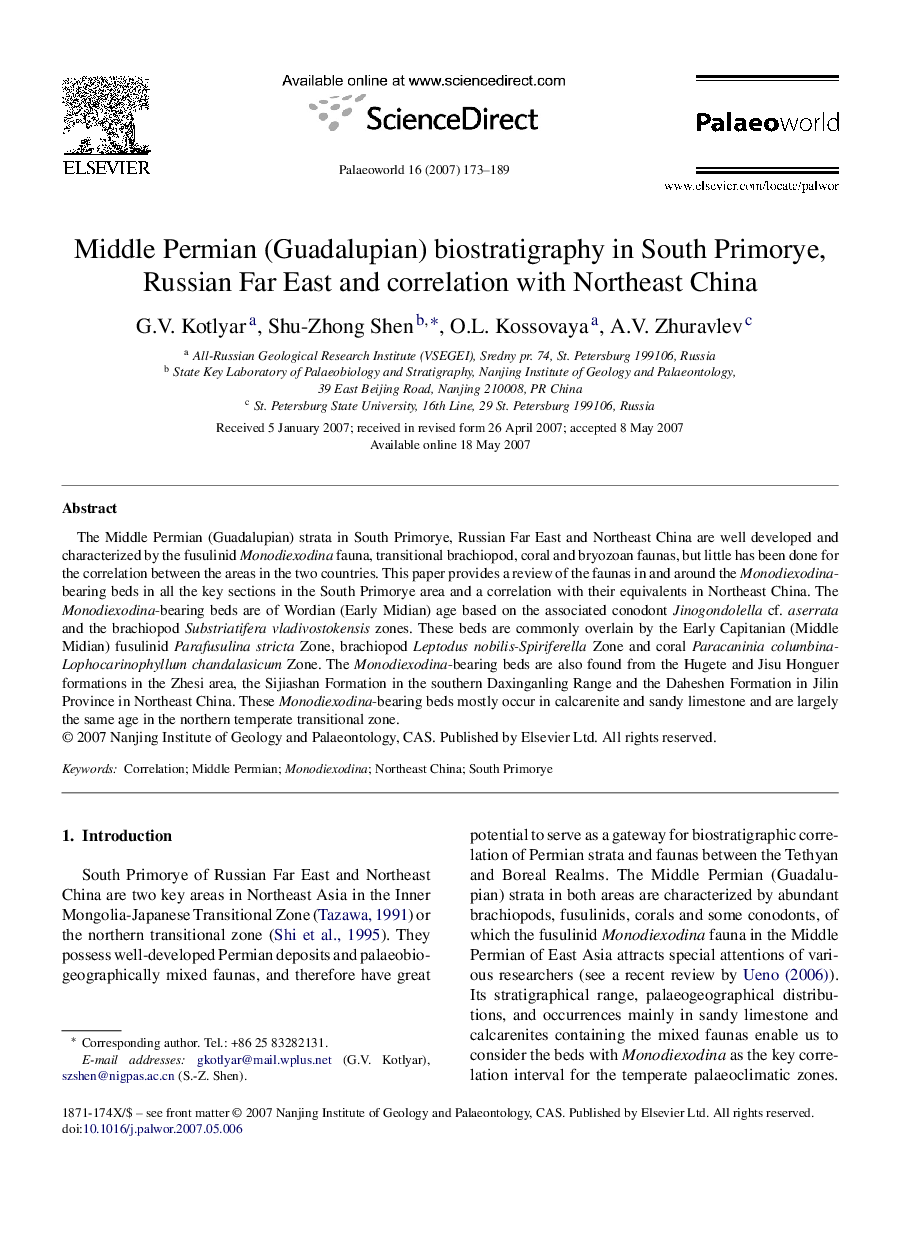| Article ID | Journal | Published Year | Pages | File Type |
|---|---|---|---|---|
| 4749973 | Palaeoworld | 2007 | 17 Pages |
Abstract
The Middle Permian (Guadalupian) strata in South Primorye, Russian Far East and Northeast China are well developed and characterized by the fusulinid Monodiexodina fauna, transitional brachiopod, coral and bryozoan faunas, but little has been done for the correlation between the areas in the two countries. This paper provides a review of the faunas in and around the Monodiexodina-bearing beds in all the key sections in the South Primorye area and a correlation with their equivalents in Northeast China. The Monodiexodina-bearing beds are of Wordian (Early Midian) age based on the associated conodont Jinogondolella cf. aserrata and the brachiopod Substriatifera vladivostokensis zones. These beds are commonly overlain by the Early Capitanian (Middle Midian) fusulinid Parafusulina stricta Zone, brachiopod Leptodus nobilis-Spiriferella Zone and coral Paracaninia columbina-Lophocarinophyllum chandalasicum Zone. The Monodiexodina-bearing beds are also found from the Hugete and Jisu Honguer formations in the Zhesi area, the Sijiashan Formation in the southern Daxinganling Range and the Daheshen Formation in Jilin Province in Northeast China. These Monodiexodina-bearing beds mostly occur in calcarenite and sandy limestone and are largely the same age in the northern temperate transitional zone.
Related Topics
Physical Sciences and Engineering
Earth and Planetary Sciences
Palaeontology
Authors
G.V. Kotlyar, Shu-Zhong Shen, O.L. Kossovaya, A.V. Zhuravlev,
